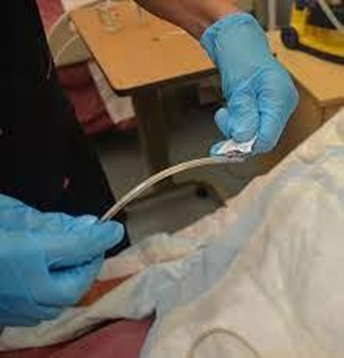A nurse is planning care for a client who is postoperative following creation of an arteriovenous fistula in the left arm. Which of the following actions should the nurse include in the plan?
Auscultate the client's left arm for a bruit every 4 hours.
Compare blood pressure in both arms every 2 hours.
Instruct the client to keep the left arm in a dependent position.
Encourage the client to restrict movement of the left arm.
The Correct Answer is A
A.
A. Auscultating the client's left arm for a bruit helps assess the patency and function of the arteriovenous fistula. A bruit indicates normal blood flow through the fistula.
B. Comparing blood pressure in both arms every 2 hours is not specifically related to monitoring the arteriovenous fistula. Blood pressure comparison may be done periodically but is not as directly relevant to postoperative care of the fistula.
C. Instructing the client to keep the left arm in a dependent position may help with venous return but is not the primary action for monitoring the arteriovenous fistula's patency and function.
D. Encouraging the client to restrict movement of the left arm is not necessary unless there are specific instructions from the surgeon. Encouraging gentle movement and range of motion exercises may actually be beneficial for preventing stiffness and promoting healing.
Nursing Test Bank
Naxlex Comprehensive Predictor Exams
Related Questions
Correct Answer is B
Explanation
A. While a blood pressure of 156/90 mm Hg may be elevated, it is not necessarily an indication to withhold propranolol, which is commonly used to treat hypertension.
B. A pulse rate of 54/min suggests bradycardia, which is a potential side effect of propranolol and may warrant withholding the medication.
C. A potassium level of 5.2 mEq/L is within the normal range (3.5-5.0 mEq/L) and is not typically a reason to withhold propranolol.
D. A sodium level of 130 mEq/L is within the normal range (135-145 mEq/L) and is not typically a reason to withhold propranolol.
Correct Answer is B
Explanation
A. The wall suction setting does not directly indicate the functioning of the NG tube.
B. Greenish-yellow drainage fluid may indicate the presence of bile in the stomach, suggesting
that the NG tube is not adequately draining gastric contents, which could indicate a malfunction.
C. An aspirate pH of 3 indicates gastric acidity, which is expected in the stomach and does not necessarily indicate a problem with NG tube function.
D. Abdominal rigidity may suggest intra-abdominal pathology but does not specifically indicate NG tube dysfunction.

Whether you are a student looking to ace your exams or a practicing nurse seeking to enhance your expertise , our nursing education contents will empower you with the confidence and competence to make a difference in the lives of patients and become a respected leader in the healthcare field.
Visit Naxlex, invest in your future and unlock endless possibilities with our unparalleled nursing education contents today
Report Wrong Answer on the Current Question
Do you disagree with the answer? If yes, what is your expected answer? Explain.
Kindly be descriptive with the issue you are facing.
